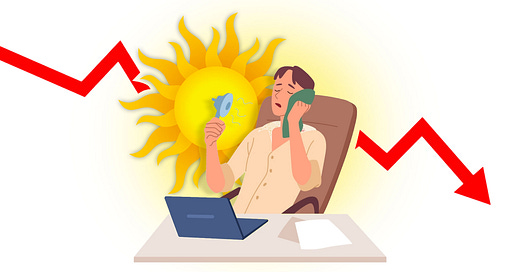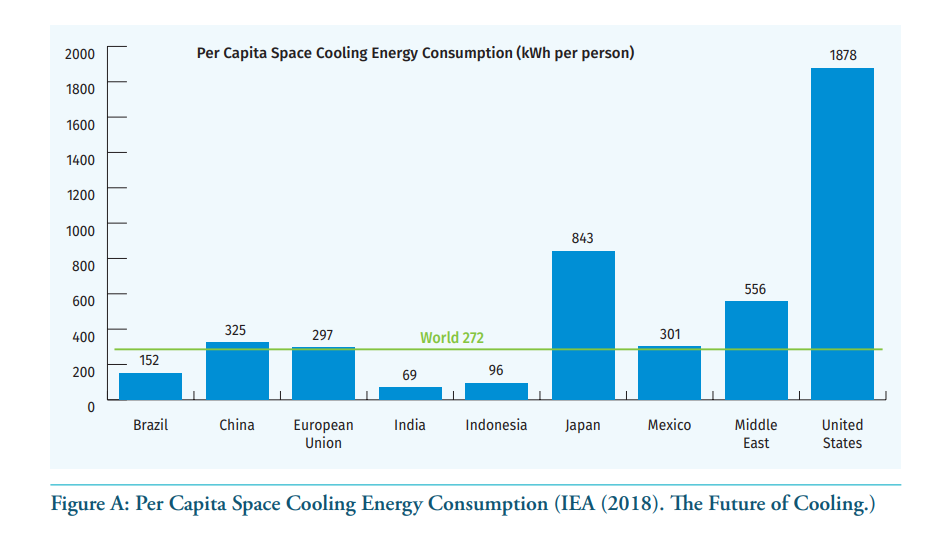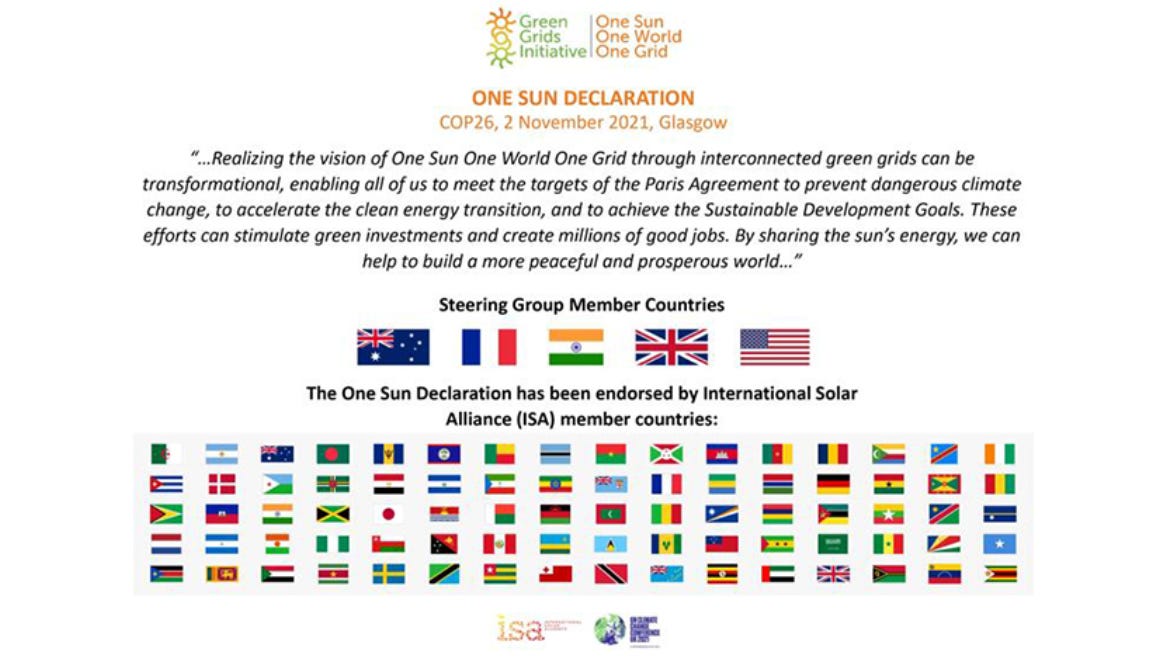Heatwaves Melting India’s Growth?
Heatwaves have put 75% of India’s workforce at risk. How does it impact the economy and what are we doing to solve it? Read on.
As per World Bank, 75% of the Indian workforce, that is 380 million people, rely on heat-exposed labor to earn a livelihood.
This is not just a large number of individuals.
These jobs contribute to nearly 50% of India's GDP.
Imagine the scale of impact when this foundational economic pillar is under threat from rising temperatures.
This isn’t far into the future. This is NOW.
Yet, this pressing issue often gets overshadowed by other more important and interesting events like the US inflation, India’s inclusion in the JP Morgan Bond Index, or the T20 World Cup.
Summer season might go soon, but it won't be gone forever.
What are we doing to tackle heatwaves and safeguard our people? How do we prevent our economy from a scorching meltdown?
Read on.
Understanding the Gravity of the Situation
Yes, heatwaves drastically reduce productivity.
Yes, heatwaves complicate daily life.
But what really is the implication? How does it really impact us?
First, let’s take a look at India’s agricultural sector which makes up 18.3% of our GDP.
Heatwaves lead to reduced water availability and lower crop yields.
Lower yields cause lower supply.
Lower supply meaning? Increase in prices.
Result?
Food inflation.
India’s food inflation was 7.9% in April 2024. And it is a big cause of worry for the economy.
You see, the RBI could either increase interest rates or delay the reduction of interest rates to curb inflation.
Here’s what RBIs governor said about food inflation in the MPC meeting held in June:
As a result, interest rates were kept unchanged.
Now higher interest rates would discourage borrowing.
Result? Economic slowdown or a slower than desired growth.
Here’s what the RBI had to say in its April 2024 bulletin about the long term impact of climate change on the economy:
“The India Meteorological Department (IMD) has forecast above-normal temperatures and heatwave days during the summer season. Climate change has increased the frequency and ferocity of weather shocks, posing challenges for monetary policy (Box I.2). All these developments could impart upside risk to the domestic food inflation trajectory and could raise headline inflation by around 100 bps over the baseline.”
Second, heatwaves reduce the working hours for street vendors, construction workers and factory workers.
As per Climate Transparency Report 2022 (funded by World Bank), Indians missed 167 billion hours of potential work because of heat waves in 2021. This translated to an income loss of $159 billion, or 5.4% of our GDP!
That’s much higher than what we spend on education as a percentage of GDP (As per PRS India, since 2015, overall allocation towards education has been around 2.8% of the GDP).
According to a report by the United Nations Economic and Social Commission for Asia and the Pacific (UNESCAP), rising temperatures in India will further reduce daily working hours by 5.8% by 2030.
Now, what are we doing to tackle the problem?
India’s Efforts in Tackling Heatwaves
As global temperatures rise, heatwaves have become the new normal and all we can do is adapt to this new reality.
Combatting and reversing climate change is another beast altogether.
Heat Action Plan
Back in 2010, 800 people died because of a heatwave in Ahmedabad.
That’s when Ahmedabad Municipal Corporation developed the first Heat Action Plan (HAP) of India.
Since then, the programme has expanded to 23 states and more than 100 cities.
How do they help?
As per National Disaster Management of India, these are some of the activities that HAPs do:
Conduct awareness generation activities around the do's and don'ts for tackling heatwaves,
Reschedule working hours for outdoor workers to avoid their exposure to extreme hot weather,
Create drinking water kiosks, supply water through tankers, build special shelter homes and increase health facilities,
Place cooling systems and construct gaushalas with fodder banks.
These measures have helped reduce deaths due to heatwave from 2,040 in 2015 to 4 in 2020.
But independent reports from this year suggest a whopping 40,000 heatstroke cases with more than 100 deaths.
Looks like the Heat Action Plan needs more planning?
India Cooling Action Plan
While temperatures are soaring, Indians are struggling to beat the heat because of lack of resources.
As compared to other countries, room air conditioners have a very low penetration in India, at around 7-9%.
In fact, as per IEA, India has one of the lowest access to cooling across the world!
Look at India’s per capita space cooling energy consumption:
Wondering why?
AC is still a luxury that many Indians cannot afford.
A one-ton AC in India can cost anywhere between Rs. 20,000 - 40,000.
Add to this the cost of electricity involved in running the AC. A 3 star 1 ton window AC can cost approx Rs.13,0001 to run, annually.
In contrast, only the top 10% of wage earners in India earn more than Rs. 3 LPA.
This puts us in a tricky situation.
We need to make cooling accessible.
And at the same time, we need to ensure that our cooling tech is energy efficient and the adversity of its impact on the environment is minimal.
To tackle our cooling problems, India launched its 20 year Cooling Action Plan in 2019: first of its kind in the world.
Here are its main goals:
India’s Solar Projects
India’s solar projects are converting our hot climate into a big opportunity.
Projects such as International Solar Alliance, rooftop solar program, and One Sun, One World, One Grid project have helped India build the 3rd largest solar power generator in the world.
Solar power can help us achieve energy independence over the long run. But in the short run, it can help us meet the increased energy demand.
You see, higher need for air conditioning means higher energy usage.
Air conditioning companies such as Voltas saw highest ever sales of ACs in FY 2023-24.
The industry had prepared for a 25-30% growth, but it is now seeing unprecedented growth of 70-80%.
As per IEA:
“Between 2019 and 2023, India’s hourly electricity demand on a high-temperature day in June (above 36°C maximum daily temperature) increased on average by about 28%, caused largely by increased ownership of air conditioners to meet higher cooling needs and other appliances.”
“Refrigeration and air conditioning (RAC) causes 10% of the global CO2 emissions”.
If we can replace non-renewable sources of energy with renewable sources such as solar power, our emissions can go down.
In fact, at the annual conference of United Nations COP26 in Glasgow, our Hon’ble Prime Minister announced that India aims to fulfil 50% of its energy needs from renewable sources by 2030.
Pretty impressive, no?
Energy pledges, sustainability goals.
All of this looks real good on paper. But…
We CANNOT Let Short Term Gains Distract Us
On one hand, headlines read:
On the other:
Earlier this year, Money Control reported:
“Unilever Plc plans to abandon or water down a string of environmental and social pledges against the backdrop of a growing backlash from investors, consumers and politicians against companies pursuing non-financial objectives”
Yet again,
Profits: 1, Environment: 0.
While our emission and sustainability goals might have a 20-30-40 year timeframe, we need to make sure that we don’t abandon or delay them for the sake of short term profits.
Climate change is upon us.
Temperatures are repeatedly testing the human survivability limits.
And we cannot let it get worse.
What is your take on this? What can we as individuals do to tackle climate change?
Estimates as per LGs energy consumption calculator, considering per unit electricity cost of Rs.6.










